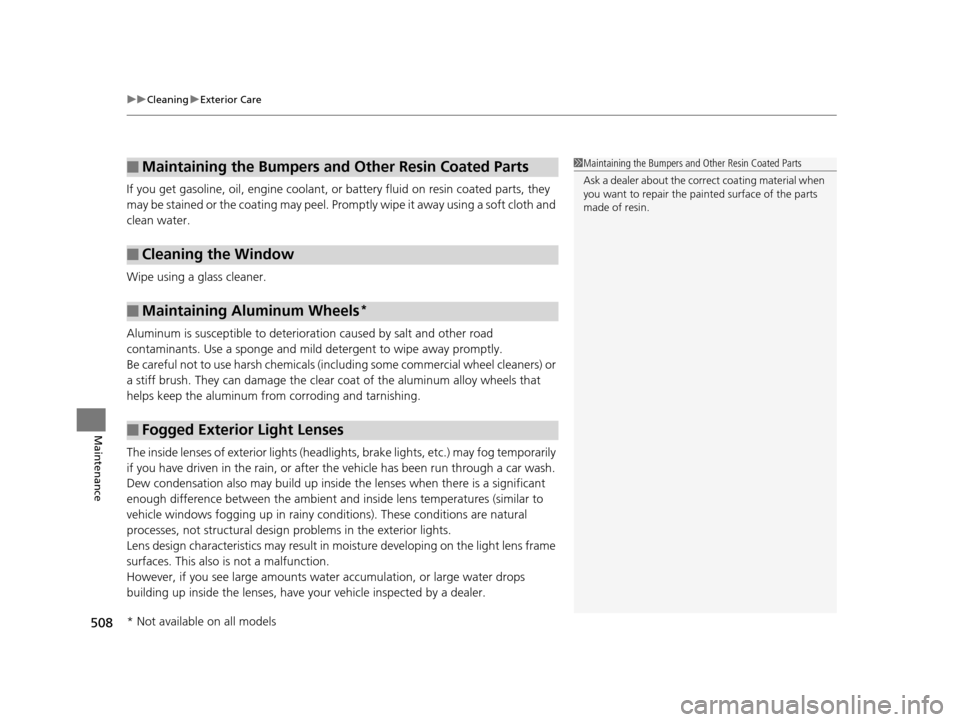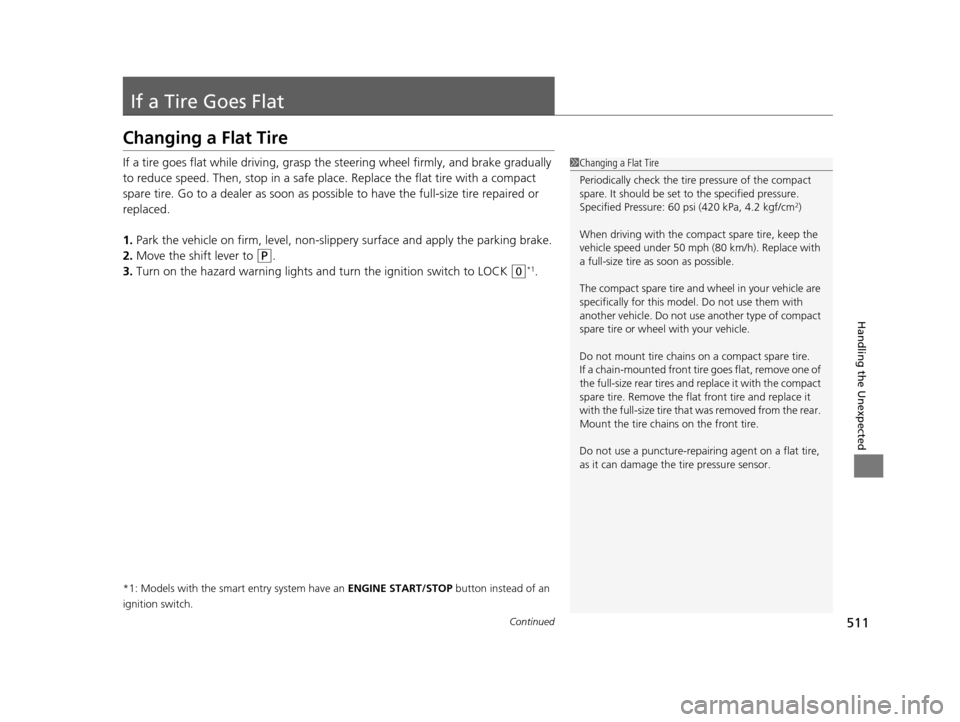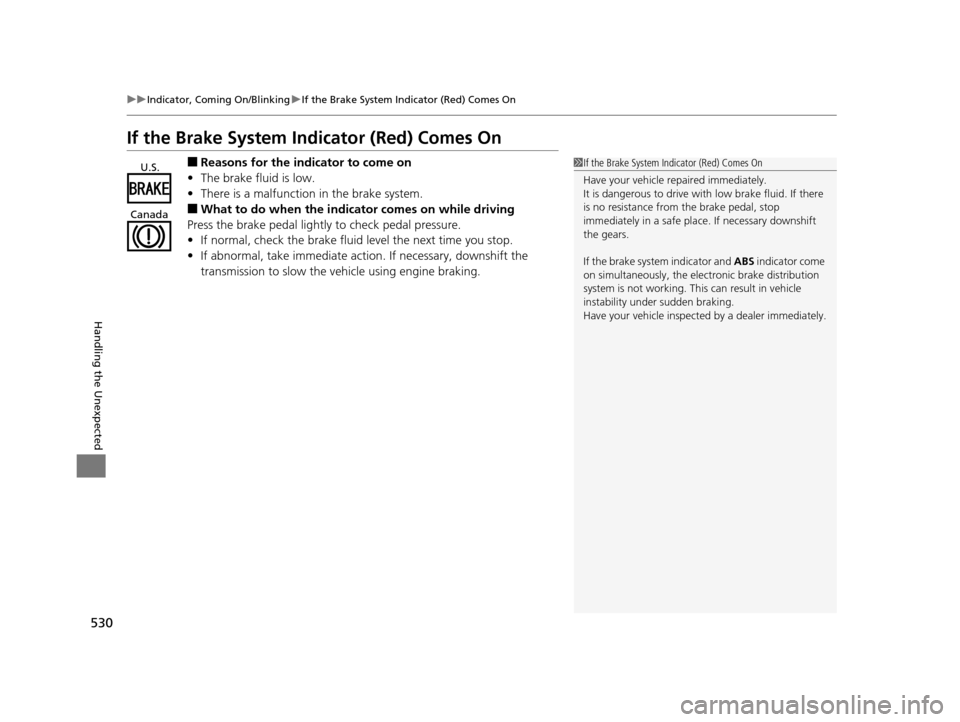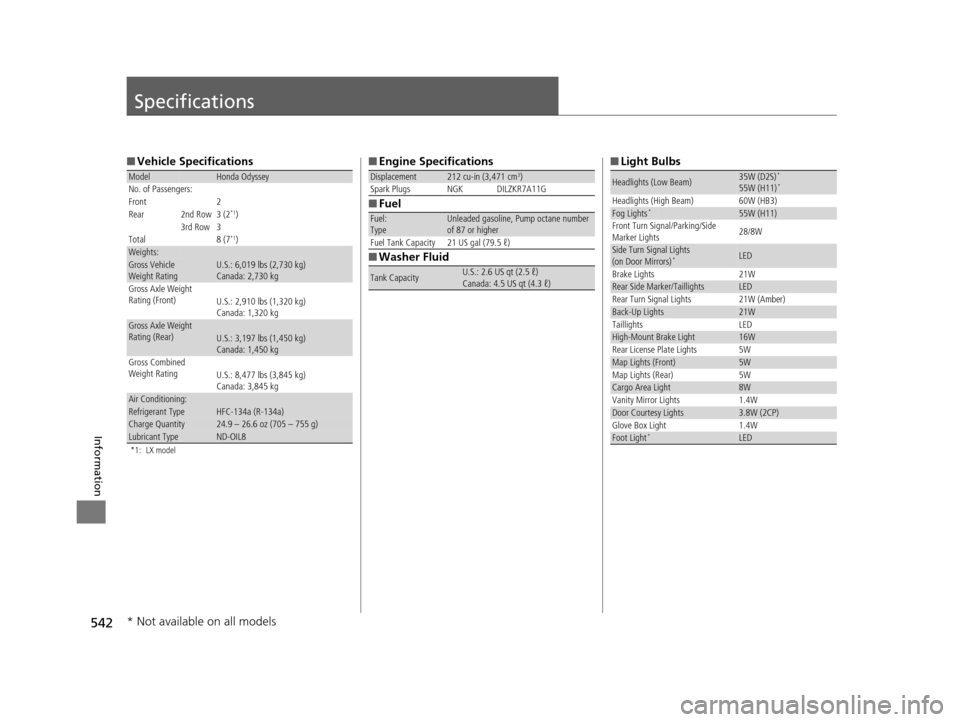Page 482 of 565
481
uuReplacing Light Bulbs uBrake Light, Rear Turn Signal Light Bu lbs, and Rear Side Marker/Taillights
Continued
Maintenance
Brake Light, Rear Turn Signal Light Bulbs, and Rear
Side Marker/Taillights
When replacing, use the following bulbs.
1.Remove the mounting bolts.
Brake Light: 21 W
Rear Turn Signal Light: 21 W (Amber)
Rear Side Marker/Taillight: LED
1Brake Light, Rear Turn Signal Light Bulbs, and Rear Side Marker/
Taillights
Rear side marker /taillights are LED type. Have an
authorized Honda dealer in spect and replace the light
assembly.
Mounting
Bolts
16 US ODYSSEY-31TK86500.book 481 ページ 2015年6月24日 水曜日 午後3時0分
Page 483 of 565
uuReplacing Light Bulbs uBrake Light, Rear Turn Signal Light Bul bs, and Rear Side Marker/Taillights
482
Maintenance
2.Place one hand on the outer corner of the
taillight assembly and other hand on the
lower edge of the taillight, near the cargo
area.
3. Pull the outer corner of the taillight
assembly toward yo u while supporting the
assembly with the hand closest to the cargo
area.
4. Turn the socket c ounterclockwise and
remove it.
5. Remove the old bulb and insert a new bulb.1Brake Light, Rear Turn Signal Light Bulbs, and Rear Side Marker/
Taillights
To reinstall, insert the fasteners into the grommets
and push the assembly back into place.
u Do not reinstall the assembly if the grommets are
loose or out of the holes . Contact a dealer to
replace them.
Grommet
Bulb
Socket
Upper
Fastener
Lower
Fastener
16 US ODYSSEY-31TK86500.book 482 ページ 2015年6月24日 水曜日 午後3時0分
Page 486 of 565
485
uuReplacing Light Bulbs uHigh-Mount Brake Light Bulb
Maintenance
High-Mount Bra ke Light Bulb
When replacing, use the following bulb.
1.Remove the lens segment by prying on the
edge using a flat-tip screwdriver.
u Wrap the flat-tip scre wdriver with a cloth
to prevent scratches.
2. Turn the socket counterclockwise and
remove it.
3. Remove the old bulb and insert a new bulb.
High-Mount Brake Light: 16 W
Screw
Lens Segment
Bulb
Socket
16 US ODYSSEY-31TK86500.book 485 ページ 2015年6月24日 水曜日 午後3時0分
Page 509 of 565

uuCleaning uExterior Care
508
Maintenance
If you get gasoline, oil, engine coolant, or battery fluid on resin coated parts, they
may be stained or the coating may peel. Prom ptly wipe it away using a soft cloth and
clean water.
Wipe using a glass cleaner.
Aluminum is susceptible to deterioration caused by salt and other road
contaminants. Use a sponge and mild detergent to wipe away promptly.
Be careful not to use harsh chemicals (inc luding some commercial wheel cleaners) or
a stiff brush. They can damage the clear coat of the aluminum alloy wheels that
helps keep the aluminum from corroding and tarnishing.
The inside lenses of exterior lights (headlig hts, brake lights, etc.) may fog temporarily
if you have driven in the rain, or after the vehicle has been run through a car wash.
Dew condensation also may build up inside the lenses when there is a significant
enough difference between the ambient and inside lens temperatures (similar to
vehicle windows fogging up in rainy conditions). These conditions are natural
processes, not structural design problems in the exterior lights.
Lens design characteristics may result in mo isture developing on the light lens frame
surfaces. This also is not a malfunction.
However, if you see large amounts wate r accumulation, or large water drops
building up inside the lenses, have your vehicle inspected by a dealer.
■Maintaining the Bumpers and Other Resin Coated Parts
■Cleaning the Window
■Maintaining Aluminum Wheels*
■Fogged Exterior Light Lenses
1 Maintaining the Bumpers an d Other Resin Coated Parts
Ask a dealer about the correct coating material when
you want to repair the painted surface of the parts
made of resin.
* Not available on all models
16 US ODYSSEY-31TK86500.book 508 ページ 2015年6月24日 水曜日 午後3時0分
Page 512 of 565

511Continued
Handling the Unexpected
If a Tire Goes Flat
Changing a Flat Tire
If a tire goes flat while driving, grasp the steering wheel firmly, and brake gradually
to reduce speed. Then, stop in a safe plac e. Replace the flat tire with a compact
spare tire. Go to a dealer as soon as possib le to have the full-size tire repaired or
replaced.
1. Park the vehicle on firm, level, non-slip pery surface and apply the parking brake.
2. Move the shift lever to
(P.
3. Turn on the hazard warning lights an d turn the ignition switch to LOCK
(0*1.
*1: Models with the smart entry system have an ENGINE START/STOP button instead of an
ignition switch.
1 Changing a Flat Tire
Periodically check the tire pressure of the compact
spare. It should be set to the specified pressure.
Specified Pressure: 60 psi (420 kPa, 4.2 kgf/cm
2)
When driving with the compact spare tire, keep the
vehicle speed under 50 mph (80 km/h). Replace with
a full-size tire as soon as possible.
The compact spare tire and wheel in your vehicle are
specifically for this model. Do not use them with
another vehicle. Do not us e another type of compact
spare tire or wheel with your vehicle.
Do not mount tire chains on a compact spare tire.
If a chain-mounted front tire goes flat, remove one of
the full-size rear tires and replace it with the compact
spare tire. Remove the flat front tire and replace it
with the full-size tire that was removed from the rear.
Mount the tire chains on the front tire.
Do not use a puncture-repairi ng agent on a flat tire,
as it can damage the tire pressure sensor.
16 US ODYSSEY-31TK86500.book 511 ページ 2015年6月24日 水曜日 午後3時0分
Page 531 of 565

530
uuIndicator, Coming On/Blinking uIf the Brake System Indicator (Red) Comes On
Handling the Unexpected
If the Brake System Indicator (Red) Comes On
■Reasons for the indicator to come on
• The brake fluid is low.
• There is a malfunction in the brake system.
■What to do when the indicator comes on while driving
Press the brake pedal lightly to check pedal pressure.
• If normal, check the brake fluid level the next time you stop.
• If abnormal, take immediate action. If necessary, downshift the
transmission to slow the vehicle using engine braking.
1 If the Brake System Indicator (Red) Comes On
Have your vehicle re paired immediately.
It is dangerous to drive with low brake fluid. If there
is no resistance from the brake pedal, stop
immediately in a safe plac e. If necessary downshift
the gears.
If the brake system indicator and ABS indicator come
on simultaneously, the elec tronic brake distribution
system is not working. Th is can result in vehicle
instability under sudden braking.
Have your vehicle inspecte d by a dealer immediately.U.S.
Canada
16 US ODYSSEY-31TK86500.book 530 ページ 2015年6月24日 水曜日 午後3時0分
Page 543 of 565

542
Information
Specifications
■Vehicle Specifications
*1: LX model
ModelHonda Odyssey
No. of Passengers:
Front 2
Rear 2nd Row 3 (2
*1)
3rd Row 3
Total 8 (7
*1)Weights:Gross Vehicle
Weight Rating U.S.: 6,019 lbs (2,730 kg)
Canada: 2,730 kg
Gross Axle Weight
Rating (Front)U.S.: 2,910 lbs (1,320 kg)
Canada: 1,320 kg
Gross Axle Weight
Rating (Rear)U.S.: 3,197 lbs (1,450 kg)
Canada: 1,450 kg
Gross Combined
Weight Rating U.S.: 8,477 lbs (3,845 kg)
Canada: 3,845 kg
Air Conditioning:Refrigerant Type HFC-134a (R-134a)Charge Quantity24.9 – 26.6 oz (705 – 755 g)Lubricant TypeND-OIL8
■Engine Specifications
■ Fuel
■ Washer Fluid
Displacement212 cu-in (3,471 cm3)
Spark Plugs NGK DILZKR7A11G
Fuel:
TypeUnleaded gasoline, Pump octane number
of 87 or higher
Fuel Tank Capacity 21 US gal (79.5 ℓ)
Tank CapacityU.S.: 2.6 US qt (2.5 ℓ)
Canada: 4.5 US qt (4.3 ℓ)
■ Light Bulbs
Headlights (Low Beam)35W (D2S)*
55W (H11)*
Headlights (High Beam) 60W (HB3)Fog Lights*55W (H11)
Front Turn Signal/Parking/Side
Marker Lights 28/8W
Side Turn Signal Lights
(on Door Mirrors)*LED
Brake Lights 21W
Rear Side Marker/TaillightsLED
Rear Turn Signal Lights 21W (Amber)
Back-Up Lights21W
Taillights LED
High-Mount Brake Light16W
Rear License Plate Lights 5W
Map Lights (Front)5W
Map Lights (Rear) 5W
Cargo Area Light8W
Vanity Mirror Lights 1.4W
Door Courtesy Lights3.8W (2CP)
Glove Box Light 1.4W
Foot Light*LED
* Not available on all models
16 US ODYSSEY-31TK86500.book 542 ページ 2015年6月24日 水曜日 午後3時0分
Page 549 of 565
548
uuEmissions Testing uTesting of Readiness Codes
Information
7. Select a nearby, lightly traveled major hi ghway where you can maintain a speed
of 50 to 60 mph (80 to 97 km/h) for at least 20 minutes. Drive on the highway in
(D. Do not use cruise control. When tra ffic allows, drive for 90 seconds without
moving the accelerator pedal. (Vehicle spee d may vary slightly; this is okay.) If you
cannot do this for a continuous 90 seconds because of traffic conditions, drive for
at least 30 seconds, then repeat it two mo re times (for a total of 90 seconds).
8. Drive in city/suburban traffic for at least 10 minutes. When traffic conditions
allow, let the vehicle coast for several se conds without using the accelerator pedal
or the brake pedal.
9. Park the vehicle and leave the engine off for 30 minutes.
16 US ODYSSEY-31TK86500.book 548 ページ 2015年6月24日 水曜日 午後3時0分